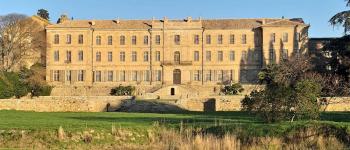
The Oppidum d'Ensérune is an archaeological site classified as a National Monument. It is one of the most important Gallic villages in the southern Mediterranean, a few kilometers from Béziers.
Built on a rocky promontory, it offers a 360° panorama of the wine-growing plain, including the strange dry pond of Montady, located in the plain, a few hundred meters from the oppidum. This pond is a real curiosity in itself, since it has been cultivated in a sector, like a green sun, since the 13th century.
This oppidum is characteristic of the habitat in southern Gaul from the Bronze Age to the Roman conquest, where it was inhabited without interruption.
The Via Domitia, which linked Rome to Spain, passed below.
An astonishing and refurbished museum
This Celtic fortified site has known several periods of occupation between the 6th century BC and the 1st century AD, marked by the influence of different civilizations (Greek, Iberian, Etruscan, Roman). Discovered in 1860 by Abbot Giniès, the site was excavated from the early twentieth century, and the museum opened in the 1920s is one of the first archaeological site museums in France. Unlike many other archaeological sites, the objects that were discovered there can be seen on site. Among the 40,000 objects conserved in the museum are one of the most important collections of Celtic weapons in Europe as well as one of the most beautiful collections of ceramics from the south of France, allowing us to observe the progressive mixing of Celtic-Iberian populations with Mediterranean civilizations.
The museum's new itinerary presents some 1,200 objects, divided into four sections: "The Crossroads of Civilizations", which presents the different cultures to which the objects found at Ensérune bear witness; "The Oppidum", which explains the evolution of the site over the centuries; "Necropolis", which presents a selection of the 500 tombs discovered; and "Classify to Understand", which exhibits the collection of vases, evoking the creation of the museum and its original presentation with the antique furniture that has been restored.
The abundant mediation (maps, drawings, old photographs, animations, sound devices, models, digital devices...) but also the scenography, which restores the context of the discovery of the objects presented in the "Necropolis" section by evoking the different tombs, allow for a better understanding of these objects, their use and the civilizations to which they bear witness, as well as the history and evolution of the site.
Oppidum of Ensérune
34440 Nissan-lez-Enserune
http://www.enserune.fr/
Translated with www.DeepL.com/Translator
(free version)




